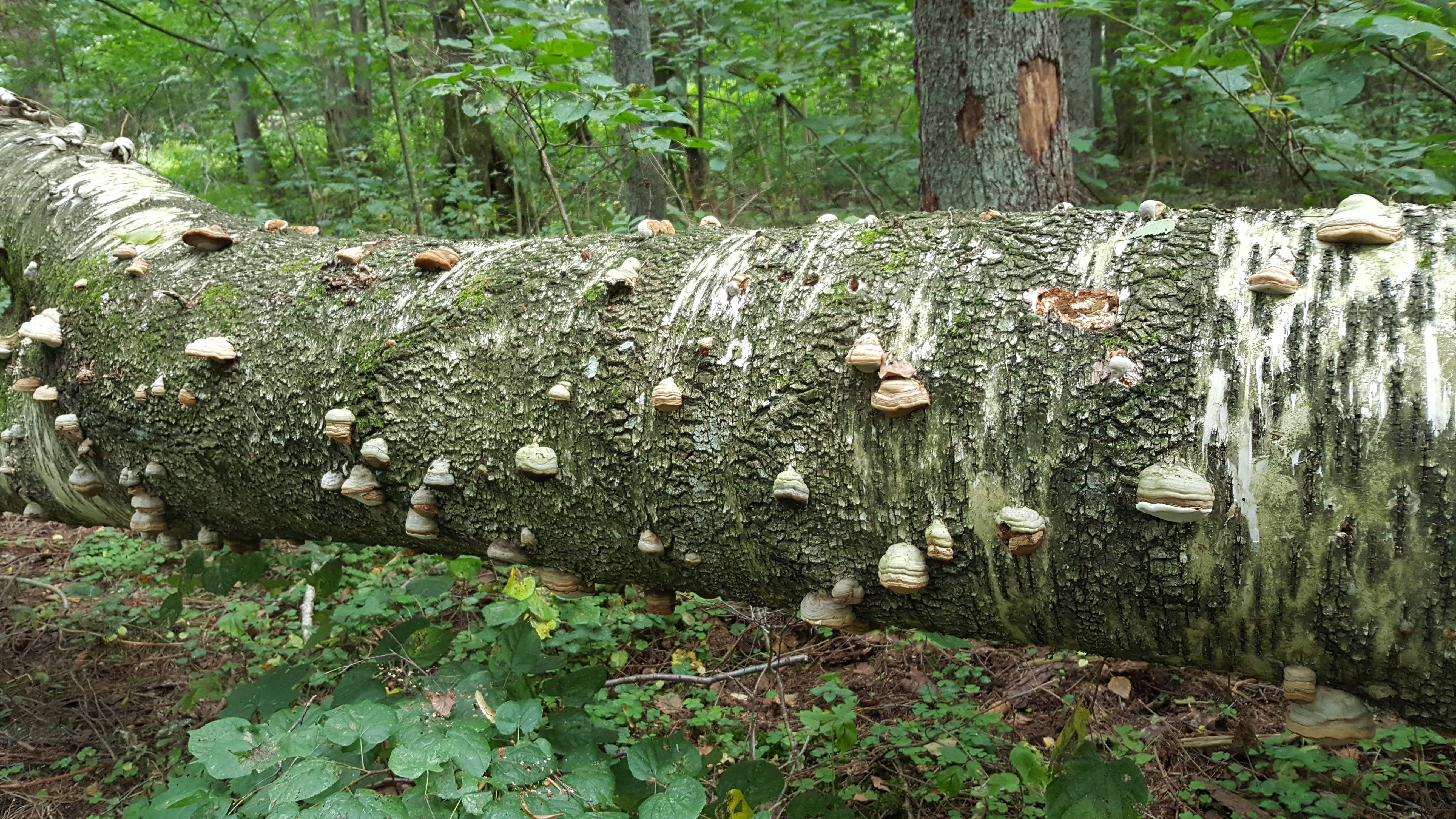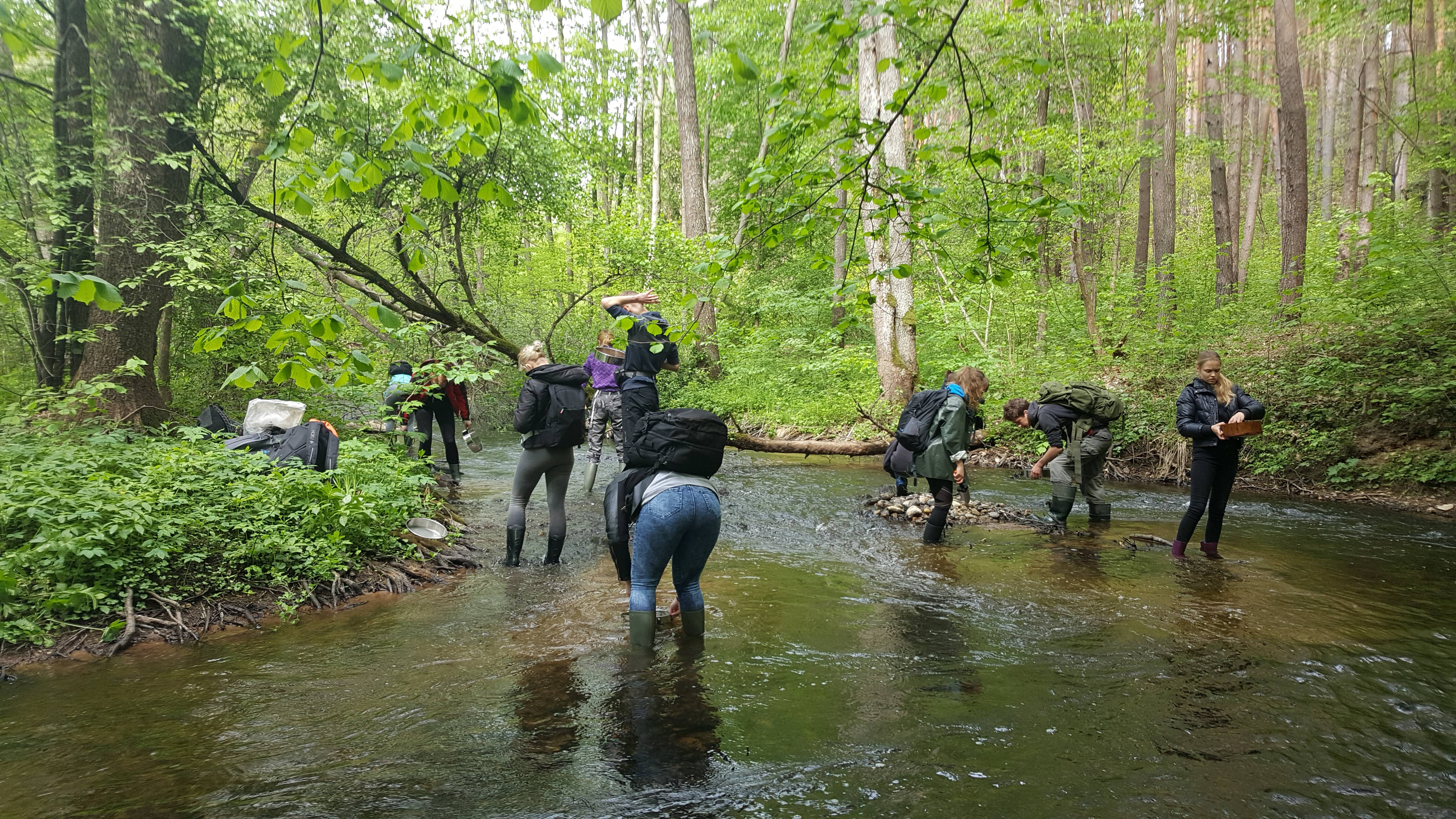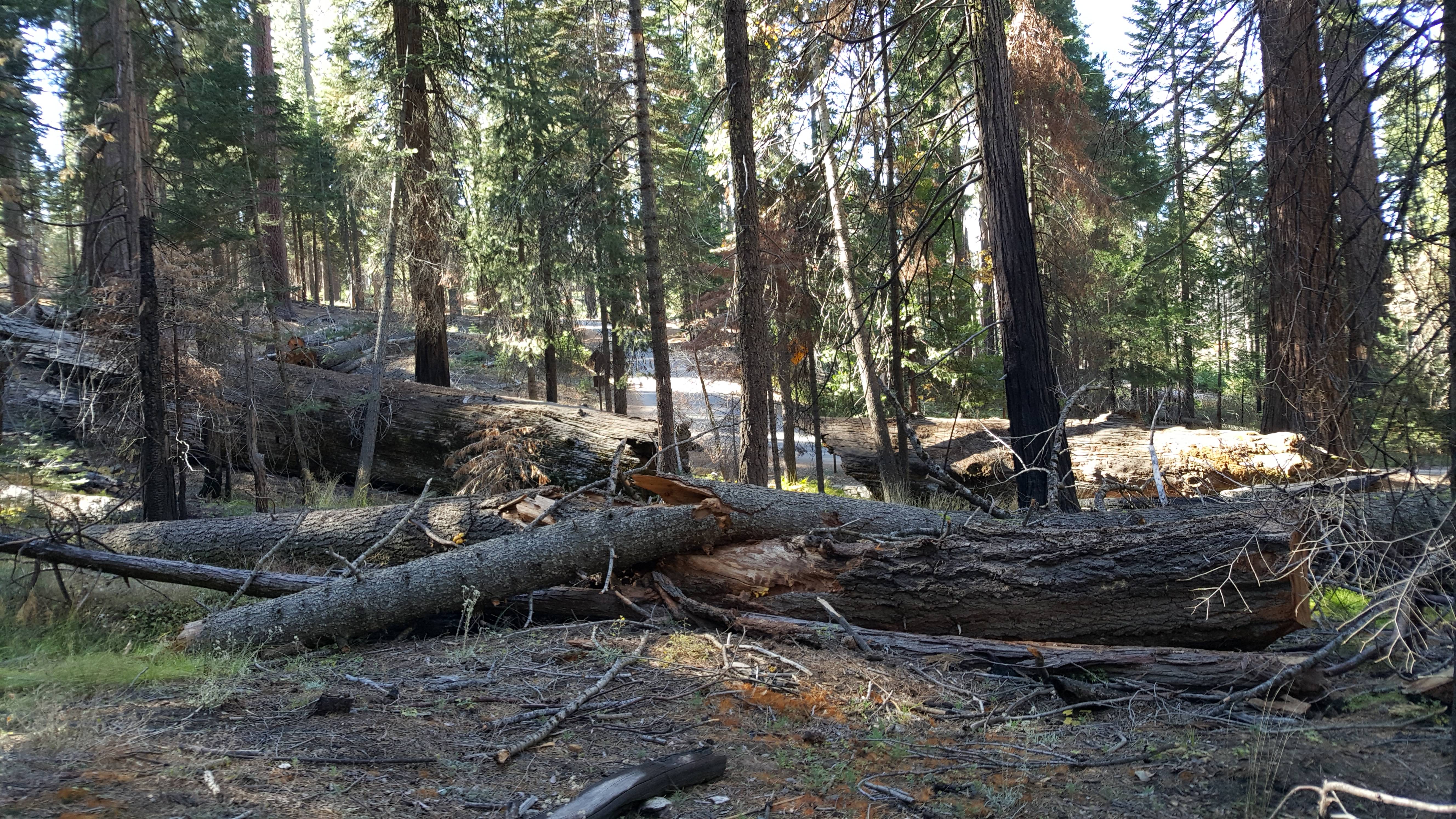Wood is needed for industry, so forests will certainly continue to be cut down. But many painful mistakes are made. Trees that are not attacked by the European spruce bark beetle (lps typographus) are destroyed, spruce trees that will leave Lithuania due to the changing climate are replanted, and forests are cleared. It is harmful to the ecosystem of which we humans are a part. "Diversity is a shock absorber that can help us avoid the unwanted changes that will undoubtedly occur with climate change. By protecting the environment, along with, of course, insects, we are actually protecting ourselves," says Professor Virginija Podėnienė.
A researcher at the Life Sciences Center of Vilnius University studies the diversity of insects. As she herself says, although we associate them with something negative, the positive functions of insects in nature counterbalance it beyond all comparison. Arthropods (the most abundant and largest group of them are insects) make up the largest biomass in the ecosystem, so we must protect and respect them. "You have to understand - if they disappear, it will be very bad for us," she adds.
We talked with Prof. Virginija Podėnienė about the importance of nature conservation, how each of us could contribute to it, and the role of insects in the ecosystem.
Q: Your research interests are insects living in dead wood, insect taxonomy, and their biodiversity. Can you tell us how you got interested in these topics?
A: I knew that I would be a biologist since I was 12 because there are always such people who discover themselves very early and know what they want. I am one of them. Until now, I have been very purposeful in my activities. I come from the province, and people there have the opportunity to encounter living nature closely more often. Therefore, usually, they do not remain indifferent.
As I joke, my first love was plants, and now I still know them quite well. But after entering the university, I met my husband, a colleague (Dr. Sigitas Podėnas – author’s note), who at that time was already studying insects. He infected me with the insect virus. Now we are a tandem, we work together, our family specializes in insect research and we work with the same group of insects as colleagues. Only he works with adult insects, and I work with larvae, but we work together, and we conduct research together, that's what our breakfast conversations are about (laughs).
Living nature is something wonderful. There is nothing more interesting and important than leaving this planet at least as we found it, if not better.
Q: Why do you study larvae and not adult insects?
A: Adult insects are very easy to catch. It is enough to have very simple tools, like an entomological net, which you wave and catch insects. The adult stage of the insect is relatively short. And the insect spends almost its entire life in the larval stage.
Usually, the larva lives in hiding, so finding it is very difficult. When we see a flying insect, sometimes we have no idea, what its larva looks like and where it might live. Just finding it is a huge challenge.
The researchers found that the larvae retain traits that are critical to the phylogeny of a group - that is showing the true relationships in the group. A large number of researchers work with adult insects, and quite a few study larvae.
Practically speaking, everything I find is new to science because there aren't very many specialists in the group of insects I study. Moreover, at present, almost all of them work with adult insects.
In the past, when I found a larva, I would try to grow it to the adult stage and then associate it with a specific species, because the larva is very different from the adult - it looks like a worm. To determine what kind of larva you have, you need to have an adult as well. Now our life has become much easier because molecular methods have appeared. We make a library of adult and larval DNA sequences, and then we can compare, see which adult matches which larva, and determine the larval species.
Larvae are used as bioindicators too. If you were to look into, for example, what bioindicators are in the water, you would find that quite a number of them are insect larvae. Some of them can show the condition of the water body. Chemical tests show the current status, while bioindicators reveal what is actually happening to that body of water over a longer period of time. For example, if oxygen is decreasing, species that need more oxygen for various reasons are the first to leave such a water body. This is just one example of why you need to get to know insects in their larval stages and why you need to know what lives in a particular area or body of water.
Forests have always been my favorite part of nature. For me, the most beautiful places in Lithuania are moist forests, fir trees, and black alder groves with marshes. In Lithuania, such places have the most beautiful nature and the greatest biological diversity. Therefore, seeing what is happening with the cutting of forests in Lithuania... Probably, there is not a single logically thinking person who would say that everything is fine, that we are using forests sustainably, and that we will leave them for future generations.
Because of my love for forests, I also became interested in insects living in dead wood. Only when I started to be interested in this area, I was surprised that insects related to dead wood in Lithuanian forests are almost unresearched. Insects are the most abundant group of organisms in the world (also in Lithuania), the numbers of their species are incomparably higher compared to other groups of organisms. For example, the group I'm researching is called dipterans. We have about 5 thousand of their species in Lithuania, while the number of plant species here is less than 1.5 thousand. Due to the lack of research and knowledge, we do not know what lives in our wood, and which species would be threatened with complete extinction due to deforestation or changes in the composition of the forest.

Būda Botanical-Zoological Reserve (Kaišiadorių district), dead wood
Q: We will talk about forests later because you touched upon a very interesting topic. You mentioned that insects are like bioindicators of what's happening in the water, for example. What else do you think everyone should know about the importance of insect biodiversity to us?
A: We should know that God loves diversity. Diversity is a shock absorber that can help us avoid the unwanted changes that will undoubtedly occur with climate change. By protecting the environment, including, of course, insects, we are actually protecting ourselves, because we will not destroy life - it will be there even after we are gone. We protect the environment so that we can live in it ourselves.
We imagine insects as biting, and buzzing - they are annoying...
Q: Well, like parasites...
A: Yes, such unpleasant creatures. But we should know that we are absolutely dependent on the positive functions of insects. They are incomparably greater and more important than their activities, which are not pleasant to us. Insects are pollinators, food processors, and an extremely important part of the food chain. We, humans, must understand that we are part of the same ecosystem and are subject to the same laws. And insects in their abundance, in their biomass, are number one among animals in the terrestrial ecosystem. We must respect, protect and appreciate what is in the environment. It must be understood: if they disappear, it will be very bad for us.
Q: Sometimes it really seems that people think that we are at the peak of evolution, and not a part of nature. By destroying nature, we destroy ourselves, and the conditions that are suitable for our species. After all, it won't be the case that the species around us die, and we live as though nothing was the matter.
A: Unequivocally. Perhaps there is a lack of persuasive and reasoned statements by researchers in public. Popularizers of science are more often seen in public, but perhaps researchers should also be more involved in this field. And, for example, to explain such a simple thing that the lawn in your yard or in cities does not have to be absolutely green in all seasons, always cut, just a few centimeters from the ground, without any other grass that we call weeds. We have a wrong idea of what is beautiful. What is healthy and useful should be beautiful.
Q: You have dedicated your career to insect biodiversity. As a researcher, what surprised you the most that you learned about insects and their life?
A: I have been working with one group of insects all my life. I was very surprised that the group we call long-legged mosquitoes can be a major food base for both fish and birds in certain ecosystems.
Recently, I had the opportunity to participate in a study in the state of Montana (USA), in which researchers found that the main food object of predatory diurnal and nocturnal birds appears to be long-legged mosquitoes (flying adults). For example, almost 80% of the menu of females and chicks of some species of predatory birds consists of long-legged mosquitoes.
I was very surprised by what I saw in Mongolia: the higher you go into the mountains, the more larvae of the long-legged mosquitoes there are in the rivers. In some places, my study group made up the absolute majority of the zoobenthos biomass. These larvae become the main food for fish (and not only fish) in that region.
Long-legged mosquitoes don't do us any harm (their adults don't feed), but we don't appreciate them, and they are so important...
Q: Now let's get back to your research on insects living in dead wood. I would like to learn more about how they are important to our natural ecosystem?
A: We live in a forest area. If we did not carry out economic activities, 50–60 years would be enough for our entire territory to be covered with forest. Agriculture has changed our landscape, vegetation and introduced species that are not common to our region.
Naturally, we have a greater diversity of insects that live in dead trees (called saproxylic). When we started researching, we were surprised by the enormous diversity. Our research is not large-scale (4 research sites, 6 tree species), but we collected over 450 species of saproxylic beetles alone.
We were surprised to find so many species that we didn't expect to find (atypical dead wood dwellers). We found many species that were registered in Lithuania for the first time. It confirms our hypothesis that the diversity of insects associated with dead wood in Lithuania is really enormous. We estimate that 30–50 percent of all insect species are those that are related to dead wood in one way or another.

A moment from the students' educational summer practice, Bražuolė stream, the Neris Regional Park
Q: Are you talking about deciduous or coniferous wood?
A: We did not study coniferous wood, we chose deciduous ones, because we knew from research in other countries that a greater variety of insects live in deciduous woods. Coniferous trees have needles, which are not, as they say, up to every insect. For example, such a low-value tree as aspen, not even suitable for firewood, is one of the most valuable trees for biodiversity. Aspen is home to a huge variety of beetles, dipterans, and other insects.
Q: Let's talk about deforestation. How do you assess deforestation, which is now receiving a lot of attention in society?
A: In order for saproxylic insects to be able to live in the environment, to be in forests, dead wood of various stages of decay is needed. Deadwood is their food, hiding place, place of development, etc. For insects to live in wood, a certain diameter of the wood is required. This is one of the biggest problems of Lithuanian forests: after felling, our forests are cleaned very thoroughly and wood of a large enough diameter is not left, which is necessary for the development of insects.
There are lots of small twigs, but only fungi, bacteria, lichens and other extremely small organisms live in them. Such twigs are unsuitable for insects to live in - they decompose too quickly, dry out quickly, get cold quickly, and heat up quickly. For the insects to live and turn the dead tree into soil in an indefinite number of years, a larger diameter wood is needed.
Clear-cutting is carried out massively in Lithuania, there are few mature forests left, and most saproxylic insects live where the forests are older: not in young forests, but where there are mature forests and dead wood of various diameters and degrees of decay.

Yosemite National Park, California (USA)
Q: Clear-cutting of forests is usually justified by the need to protect trees from typographers. Do they attack all trees?
A: Only spruce trees. They attack living but weakened spruce trees. When dead trees are cut down, they no longer contain the European spruce bark beetle (lps typographus). When the spruce bark beetle eats the spruce tree, the tree appears to be still alive. Tiny spruce bark beetle larvae eat the inner part of the spruce bark, which causes the tree to dry out. Another huge problem is that the spruce will most likely leave Lithuania because it is too dry and too hot here. It is a type of boreal forest. In Lithuania, spruces are still intensively planted, monoculture forests are formed. A complete misunderstanding! There is no argument that explains why foresters do this. Spruce trees should not be planted everywhere and very abundantly, as it programs the problem in the future. They will be attacked by the European spruce bark beetles, so you will have to cut down the forests again.
The forestry community should answer these questions and find ways to shape commercial forests. Wood in our region is an important resource and part of our economy. People needed, need and will need everything that is made of wood, therefore, whether we like it or not, forests have been cut down, are cut down and will be cut down. You just need to manage felling more wisely - don't plant monocultures, think about what can be planted instead of spruce, reduce the volume of clear-cutting, protect mature forests, etc.
Q: The last question - what could each person do to protect our nature?
A: The first thing that is very difficult to implement is the reduction of consumption. This is the answer to all problems. We are a consumer society, we need everything here and now, and in large quantities. But if we reduce consumption and consume responsibly, we would make a big impact both locally and globally.
And another thing, we need to look at how we live, what we consume, and who we buy from - do we support, for example, farmers who try to farm organically? Do we buy from such farmers who don't care about nature at all, what matters is profit: I fertilized, used a bunch of herbicides, and insecticides, got a profit and I don't care, what will happen to the environment where I grew all this.
Nature itself is perfect. It should not be processed according to our understanding. There should be a lot of everything in nature - various grasses, dead branches, and other things that may not look aesthetically pleasing to us. If you have a lawn, try to maintain as rich a diversity of grasses as possible there, don't mow too often.
Q: Let's wish that for everyone! Thanks for the interesting conversation.
A: Thank you.
Interviewed by Goda Raibytė-Aleksa
Photo credits: V. Podėnienė's personal archive
